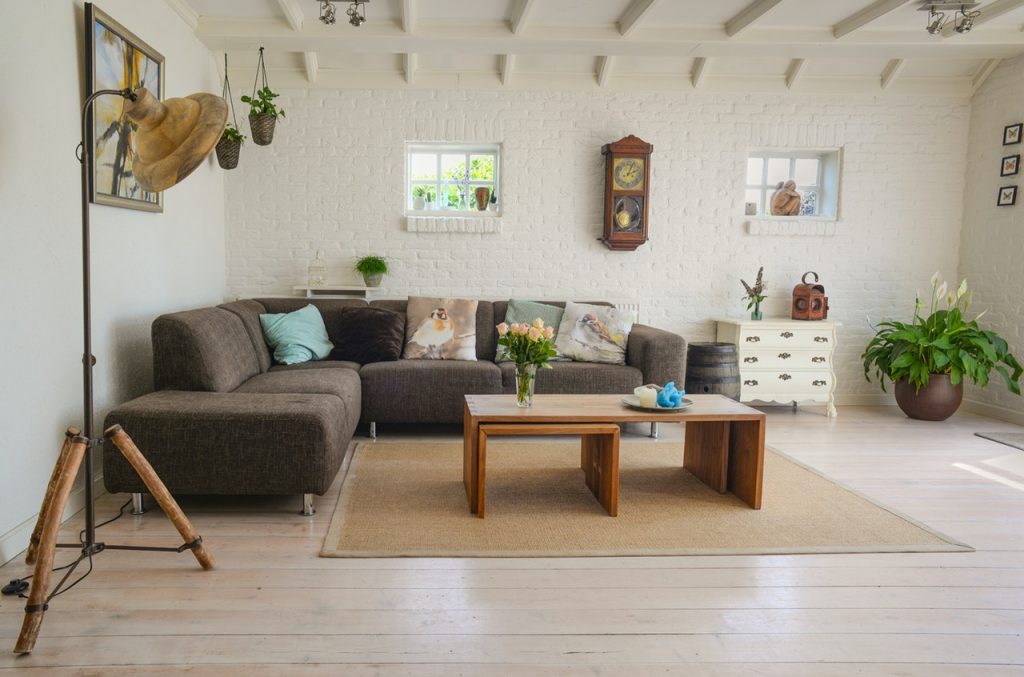7 Tips for Creating Space

Properties are continually increasing in value while living spaces are diminishing, and rooms you could barely swing your arms in have become the standard.
With more people living in cities ‘micro-living’, it may play havoc with your head when it comes to designing your house the way that you want, whether that be designed for art studio or coastal home interiors. However, although you may reside in a box and have more things than you do actual space, do not despair. It is possible to use all of the space economically in a cramped house, while having no cluttered mess.
Below are a few easy layout tips to help you get that additional space.
Keep it in ratio
There is nothing worse than furnishings which look out of proportion such as your ideal couch (barely squeezing through front entrance), taking over the whole room. Or the unnecessarily long dining table which you continue to knock your thighs and hips on each and every time you walk past. Before you start purchasing, check the ideal scale, measure properly and consider how you wish to create the most of your limited space or consider getting advice from interior design professionals.
If your area is too compact to get a traditional dining table, attempt a round style table. And should the couch not fit nice and snug against the wall, then go and get a corner couch that wraps around the wall to boost your living area. The same is true for furniture that is too little, which looks miniature in a massive living room.
Use Mirrors
Mirrors reflect light and are among the greatest strategies that you could implement to immediately make your small space feel airy and open, particularly if there is also a window. However, any reflective surface like stainless steel that might be in the kitchen, shiny surfaces and metallic fittings may also do just fine. A full-size mirror at the end of a darkened and narrow hallway consistently makes the room look brighter.
Float on
Furniture does not always need to be on the floor taking up precious floor space. Based on how stable your walls are, floating shelves, cabinets and storage components could be hung on the walls. The best floating components are the floating box shelves and cabinets that are sensible for storage but also seem appealing. Just do not forget to check what is behind the wall before you begin drilling holes anywhere. Keep an eye out for cables for instance and calculate correctly as you do not want to make the wall unsightly.
For tenants, make sure you first check your arrangement and if it is permitted or face the anger of your landlord.
In the nooks and corners
When you have some alcoves or recesses on your walls, then you may use these for shelves or some other decorative displays such as paintings for an art studio or beach style homewares for a coastal vibe. Built-in bookshelves offer you additional storage space with a chunky slice of furniture protruding into the space. Corners could be such a waste if not used correctly. Whether it be a sleeper couch, TV cupboard or shelf, these corner layouts need to fit neatly into the space and save you room.Out of sight
Multi-purpose storage, for example ottomans or blanket boxes, are a smart and useful means that allow you to hide clutter in addition to having comfortable chairs. You may acquire several sizes and styles that enhance your own rooms and they are an excellent way in which to store children’s toys to keep the clutter at bay. If you do not have room for a large cumbersome coffee table, a group of smaller or a few side tables are a good option as they can tuck in neatly to a corner or be readily moved around the house.
Keep it neutral for smaller rooms
I have found that among the most common reduced living space ideas is using neutral colours on the walls, flooring, ceiling and furniture upholstery. Tones like beige or cream extend the perceived space and have a tendency to lighten up a space by enhancing the existing light. You can always include some splashes of bold colour throughout you living space along with your décor. A big tiled rug, vibrant cushions, accessories or artwork adorned on walls can decorate neutral rooms, therefore it does not feel overly clinical and dull.
Off the rails
When it comes to house design, items on wall-mounted rails can be of use. You will have more counter space and it will appear less cluttered. People in this day and age have a tendency to do so in streamlined kitchens or baths where storage is limited however, you can utilize rails anywhere in the house. Installing racks on the rear of doors to hang clothes or accessories can also be a very smart and aesthetic method of creating more space in your home.



